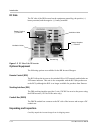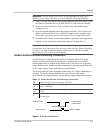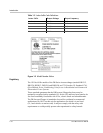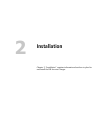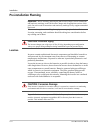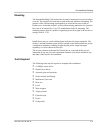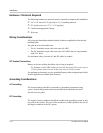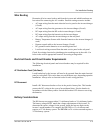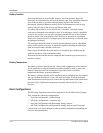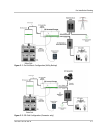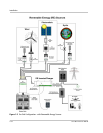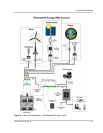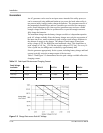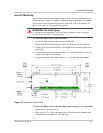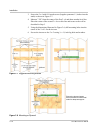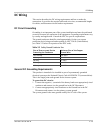
Installation
2–6 975-0012-01-02 Rev A
Battery Location
Locate the batteries in an accessible location. Two feet clearance above the
batteries is recommended for access to the battery caps. They should be located as
close to the inverter as possible without limiting access to the inverter’s
disconnects. Install the batteries to the left of a wall mounted inverter for easy
access to the DC side of the inverter and shorter cable runs.
For safety and to limit access to the batteries, a lockable, ventilated, battery
enclosure or dedicated room should be used. If an enclosure is used, it should be
vented to the outside via a one inch vent pipe located at the top of the enclosure.
Install an intake vent at the bottom of the enclosure to promote air circulation.
These vents exhaust explosive hydrogen gases and must not be overlooked when
designing an enclosure.
The enclosure should be made of an acid resistant material or have a finish that
resists acid to prevent corrosion. It should be capable of holding the electrolyte
from at least one battery should a leak occur.
Place a layer of baking soda on the shelves to neutralize any acid that may be
spilled in the future (lead-acid batteries only).
Enclosures located outside must be rainproof and screened to prevent access by
rodents or insects.
Battery Temperature
The battery enclosure should provide a fairly stable temperature for the batteries.
If it is installed in a cold environment, insulation should be used to protect the
batteries from the cold. The insulation also provides a more consistent
temperature and better system performance.
The battery enclosure should not be installed in direct sunlight where the summer
sun can overheat the batteries. Locate the enclosure where it will be protected
from the afternoon sun and provide vents in the top and bottom of the enclosure to
provide air flow. High battery temperatures greatly shortens the life of the
batteries.
Basic Configurations
The following illustrations show basic applications for the DR Inverter/Charger.
They include the following configurations.
• On-Grid Configuration - Utility Backup
• Off-Grid Configuration - Generator only
• On-Grid Configuration with Renewable Energy Sources
• Off-Grid Configuration with Renewable Energy Sources and a Generator
Consult with your system design for other possible configurations depending on
site and code requirements.



